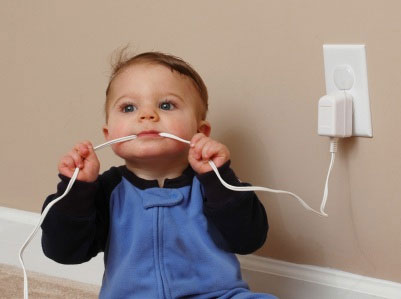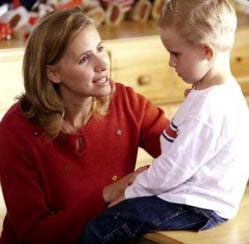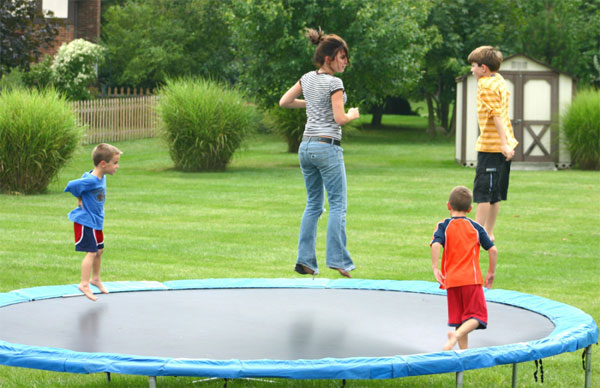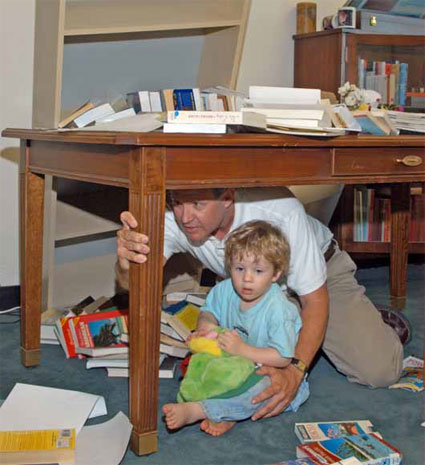Children often get hurt while playing. This is usually because of unsafe equipment, or hard surfaces in the playground. But there are quite a few things you can do to ensure your child remains safe at a playground. Here are some tips to minimise the chances of a playground injury. Children enjoy playing outdoors. They get a chance to explore their environment and have a much larger area to play in. But visiting a playground also increases the chances of a child injuring himself. A large percentage of injuries take place at a playground. These could range from minor cuts and bruises to broken bones. However, with a little care, you can greatly reduce the odds of your child being seriously hurt. Here are some guidelines to ensure playground safety. In this articleConstant SupervisionProper Space ArrangementsSafe EquipmentSoft Landing AreaConstant Supervision As far as possible, avoid sending young children to the playground by themselves. If you cannot personally accompany your child to the playground, have his guardian or nanny do so. This is especially important if your child is less than nine or ten years old. The person accompanying your child should be a responsible adult with basic knowledge of first aid. While playing, the guardian should carefully supervise the childs activities. Before the child proceeds to the playground, a set of rules should be laid down. For very young children, certain playground equipment should be out of bounds. This will depend on what is appropriate for the childs age and physical ability. In addition, other rules like no playing on wet equipment and surfaces, wearing shoes at all times, etc. are also necessary. Supervising playground activity is the first step to minimising the risk of injury. A child often does not realise that he is doing something wrong because he is engrossed in play. An adult supervisor though, can determine if a child is in a dangerous situation and respond appropriately. For example, a child who is attempting to hang upside down on a slide can be cautioned immediately and prevented from repeating the same behaviour in future. Proper Space Arrangements Analyse the playground itself before you permit your child to play there. A playground should have fences or barriers around it. This prevents children from accidentally running out onto a crowded street. A playground should also ideally not have ponds or other hazards. If they do exist, they should be fenced off so that children cannot easily gain access to them. The playing equipment should also have a reasonable amount of space between them. Equipment like swings, slides, merry-go-rounds etc. require adequate amount of space around them, to enable children to enter and exit the equipment safely. For example, a child using a swing should not collide with a child coming down a slide. Safe Equipment Safe equipment is a prerequisite for a safe playground experience. All playground equipment should be anchored firmly to the ground. This prevents them from suddenly rising up or coming loose while a child is using them. Equipment should be designed keeping in mind the age group of the children it is meant for. For example, the bars between the monkey bar apparatus should not be wider than half the height of the child. Playground equipment should also meet basic safety standards. The slide should have a fairly large top deck with hand rails on both sides. Swings should be placed far enough apart so that children sitting on them do not collide with each other. Similarly, the merry-go-round should have a flat surface and be provided with handholds for the children to use. Soft Landing Area Another factor involved in keeping your child safe is the surface of the playing area. Playground equipment must never be placed on hard surfaces such as asphalt or concrete. If a child falls off the equipment on these surfaces, he is likely to be seriously hurt. Instead, equipment should be kept on a soft surface like well-packed earth, or grass, namely a surface capable of reducing the impact of a falling body. Playing outdoors is important for a childs all-round development. Promoting a safe playground environment for a child will only make his experience more enjoyable.
Children often get hurt while playing. This is usually because of unsafe equipment, or hard surfaces in the playground. But there are quite a few things you can do to ensure your child remains safe at a playground. Here are some tips to minimise the chances of a playground injury. Children enjoy playing outdoors. They get a chance to
explore their environment and have a much larger area to play in. But visiting a playground also increases the chances of a child injuring himself. A large percentage of injuries take place at a playground. These could range from minor cuts and bruises to broken bones. However, with a little care, you can greatly reduce the odds of your child being seriously hurt. Here are some guidelines to ensure playground safety.
Constant Supervision
As far as possible, avoid sending young children to the playground by themselves. If you cannot personally accompany your child to the playground, have his guardian or nanny do so. This is especially important if your child is less than nine or ten years old. The person accompanying your child should be a responsible adult with basic knowledge of first aid.
While playing, the guardian should carefully supervise the child's activities. Before the child proceeds to the playground, a set of rules should be laid down. For very young children, certain playground equipment should be out of bounds. This will depend on what is appropriate for the child's age and physical ability. In addition, other rules like no playing on wet equipment and surfaces, wearing shoes at all times, etc. are also necessary.
Supervising playground activity is the first step to minimising the risk of injury. A child often
does not realise that he is doing something wrong because he is engrossed in play. An adult supervisor though, can determine if a child is in a dangerous situation and respond appropriately. For example, a child who is attempting to hang upside down on a slide can be cautioned immediately and prevented from repeating the same behaviour in future.
Proper Space Arrangements
Analyse the playground itself before you permit your child to play there. A playground should have fences or barriers around it. This prevents children from accidentally running out onto a crowded street. A playground should also ideally not have ponds or other hazards. If they do exist, they should be fenced off so that children cannot easily gain access to them.
The playing equipment should also have a reasonable amount of space between them. Equipment like swings, slides, merry-go-rounds etc. require adequate amount of space around them, to enable children to enter and exit the equipment safely. For example, a child using a swing should not collide with a child coming down a slide.
Safe Equipment
Safe equipment is a prerequisite for a safe playground experience. All playground equipment should be anchored firmly to the ground. This prevents them from suddenly rising up or coming loose while a child is using them. Equipment should be designed keeping in mind the age group of the children it is meant for. For example, the bars between the monkey bar apparatus should not be wider than half the height of the child.
Playground equipment should also meet basic safety standards. The slide should have a fairly large top deck with hand rails on both sides. Swings should be placed far enough apart so that children sitting on them do not collide with each other. Similarly, the merry-go-round should have a flat surface and be provided with handholds for the children to use.
Soft Landing Area
Another factor involved in keeping your child safe is the surface of the playing area. Playground equipment must never be placed on hard surfaces such as asphalt or concrete. If a child falls off the equipment on these surfaces, he is likely to be seriously hurt. Instead, equipment should be kept on a soft surface like well-packed earth, or grass, namely a surface capable of reducing the impact of a falling body.
Playing
outdoors is important for a child's all-round development. Promoting a safe playground environment for a child will only make his experience more enjoyable.



































